
Review on 💻 GIGABYTE Z590 Vision G: High-Performance Intel Z590 ATX Motherboard with PCIe 4.0 and Lightning-Fast USB 3.2 Gen2X2 Type-C by John Bennett

Great mobo but poor design at core
I spent part of the last year or so upgrading my computer from just powerful to one that wanted to be powerful and look beautiful. By the way, I've been a fan of Gigabyte's Vision series for a while. I'm definitely more of a gamer than a creator (although I'll try my hand at it), but generally mobos don't affect it that much, except for ports. When I switched to the i9-10850k due to good sales I clicked on this Vision G board as it was great and seemed full featured for the price. And now I'm changing it. The main issues here, which aren't mentioned anywhere in Revain and which I've had a hard time finding even on the Gigabyte side, is that the m.2 slots limit performance. One thing that I think sells well on this board is the four (4) M.2 slots. I don't have 4 m.2 drives yet but I have 2 and I like the expandability so at $280 it felt like a bargain. But when you get your board and have a 10th gen processor like me, you'll find that the top m.2 slot doesn't work. It is "reserved for Gen 11" to take advantage of more PCIe and PCIe 4.0 lanes. It sucks and drove me crazy the first time I tried to start my computer after building it. But I'm retracting that a bit as it's common on z590 boards. It's not just about this board/gigabyte, I have 3 other ports so it should be fine right? Well wrong. Through design considerations by Gigabyte alone, your x16 PCIe slot will be halved to x8 when using either of the two (2) middle m.2 slots. For some reason they decided to put them on a switch with the first PCIe slot for direct CPU power. I understand that m.2 nvme can/will be run from PCIe, and the more important feature is their direct connection to the CPU in PCIe 4.0, but it won't harm your GPU in general. For the most tech savvy only: if you have a 10th or 11th gen processor, it doesn't matter that the 11th gen has more PCIe lanes to deal with, your PCIe lane is locked at x8. It's not even justified as "it's a creative board" because even developers need their graphics card, a lot of people edit and stream videos like I do sometimes even when they're not gaming, so it's absurd. that's a lot of negativity for you at the top and that's why I'm exchanging it. So why still 3 stars? Well, for starters, because this information can be found on the Gigabyte website if you look at the specs or the manual. It requires a little more research than I do and more than most people could possibly do. But I like to take pride in the fact that I routinely do this due diligence, so I can't completely blame them. Another more technical factor is that x8 shouldn't interfere, at least in theory. I have an Asus ROG Strix 2080 Super on my computer, and from all the information I can find, this thing won't even be able to hit the PCIe 3.0 bandwidth limit at x8, even with maximum overclocking. None of the Nvidia 20 series should do this, and perhaps the 30 series shouldn't either. At least you shouldn't notice any performance drops. This is especially true if you buy this 11th gen mobile CPU as it unlocks PCIe 4.0 which has twice the bandwidth limit. I wasn't willing to shell out close to $300 for a mobile device and possibly leave the performance on the table in the future because future GPUs or PCIe cards I need may hit that bandwidth limit and there are other boards out there that don't do this. . Another good thing to pick up is just good. First of all, it's the looks. It's just incredibly beautiful. I still like the look of the Vision line. Clean and white/silver that matches my drop and builds up to the tee and clean lines that just look pretty. LEDs are rare and clean. I might have wished for more features to be able to control via the Gigabyte app, but to be honest, while I'd love to, it's usually just strips of light, so that's fine. Another thing is that while I didn't like the m.2 performance on the board, it's really worth mentioning the number of slots and their ease of use. I had no trouble accessing a drive or placing it in an m.2 slot. I also like the I/O on this board. All slots on the board itself were easily accessible, and the 5 USB-A 3.2 ports and 2 USB-C 3.2 ports, along with a BIOS flashback port and 2.G Ethernet are well-suited for any creative person or gamer. The board and BIOS from Gigabyte also had a positive effect on the performance of my processor. The base clock of the 10850k is 3.6GHz and the overclock limit is 5.2GHz (and proves to be the most stable frequency I've found). This mobo gave me 4.8GHz on all 10 cores without applying any tweaks or boost settings. This is a really good default tweak. Overall, this is a good price, but for the Z-Class and $279, you can get more. I'm not replacing it with the Gigabyte Vision D because while it doesn't have the same m.2 issues for the PCIe lane, it also costs over $100, which isn't worth it when Gigabyte burned me on it. I considered the Asus ROG Strix Z590-A as a replacement, although the more rugged gaming look wasn't my favorite, but it was a $329 board packed with features, but I didn't need and wanted Wi-Fi no longer to pay. So I settled on the Asus Prime Z590-A, which looks a little softer than the ROG but still offers almost the same features as the Vision G for the same $280. If you don't need a BIOS flashback port, I recommend this board. .
- Hands-free operation
- Very expensive
New products
Comments (0)
Top products in 🧰 Computer Internal Components
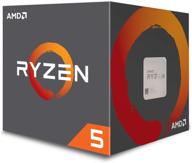
🔋 Power Up Your Gaming Rig with AMD Ryzen 5 2600 Processor with Wraith Stealth Cooler - YD2600BBAFBOX

116 Review
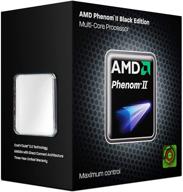
AMD Phenom II X4 940 💻 Black Edition 3.0GHz AM2+ Processor - Retail

96 Review
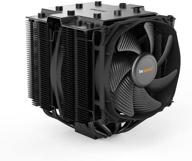
🌬️ Silent Cooling Power: Dark Rock Pro 4 CPU Cooler with 250W TDP, BK022

134 Review
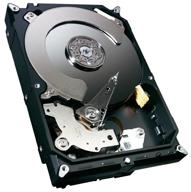
Seagate Barracuda 1TB HDD ST1000DM003

93 Review
Another interesting products

36-Pack Black Rubber PC CPU/Case Fan Screws/Rivets Set for Computer

11 Review
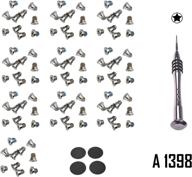
🔧 Premium Repair Replacement Screws & Tools for MacBook Pro Retina 15"/13" - Complete Bottom Case Set

10 Review

uxcell 3.5" HDD Screw Black 200pcs for Computer PC Case - Flat Phillips Head - 6#-32 - Hard Drive Fasteners

10 Review
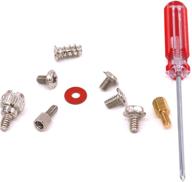
Glarks 660 Pieces Phillips Assortment Motherboard

10 Review

